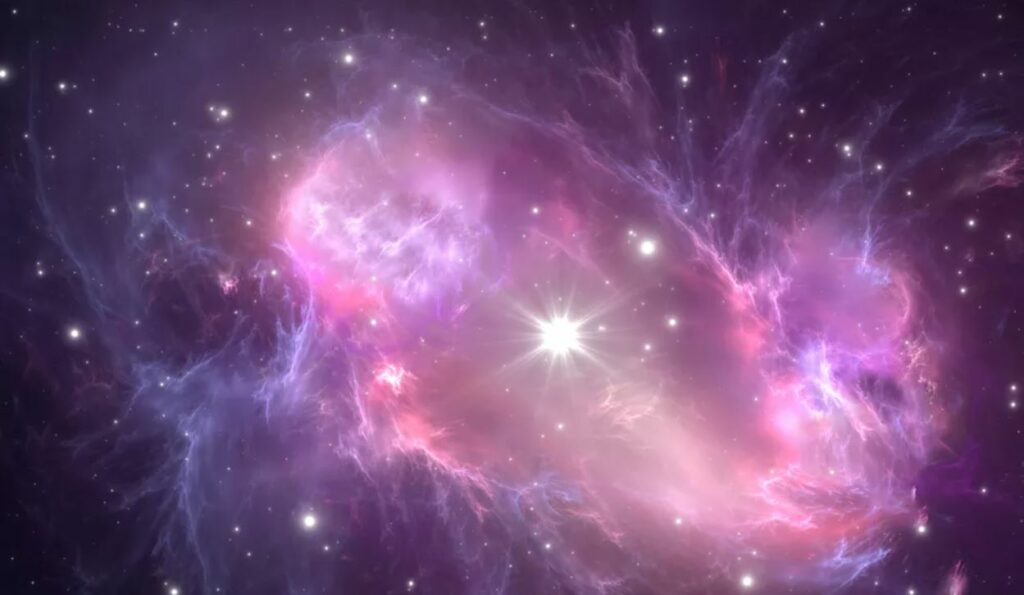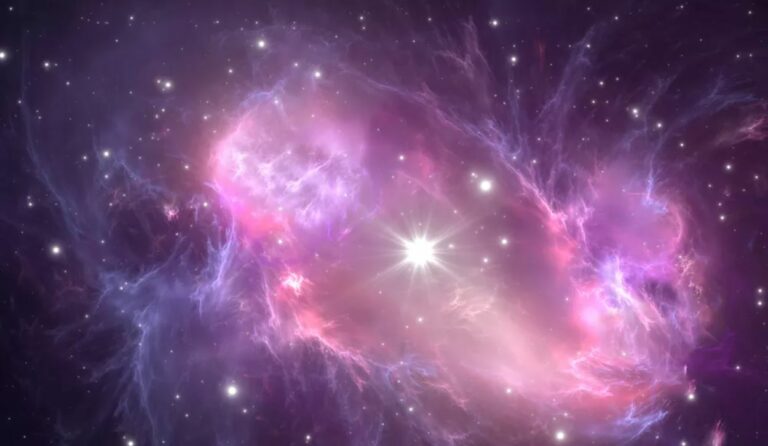Decoding the Mysterious Radiation Signal from the Early Universe: Proposing a Dynamic Dark Energy Framework
The concept of dark energy, an enigmatic force driving the universe’s expansion and perplexing scientists, remains shrouded in mystery. With no clear understanding of its nature, cosmologists are actively formulating various theoretical models and exploring their observational implications in hopes of unraveling its secrets.
In intriguing developments, recent research hints at the possibility of an evolving and dynamic form of dark energy, potentially discovered through the examination of radiation emitted during the emergence of the first stars in the universe.
During the early stages of cosmic evolution, billions of years ago, the universe existed in a significantly darker state compared to the present. It took considerable time for the initial stars and galaxies to coalesce and emerge, forever altering the cosmos as we know it.

Prior to the formation of these early stars, the universe was predominantly filled with a tenuous haze of neutral hydrogen and helium gas, resulting from a pivotal event called recombination. This transformative period occurred when the universe was approximately 380,000 years old, cooled down sufficiently to enable the transition from a hot plasma to a neutral state, allowing electrons to bind with nuclei and form the first atoms.
However, as the first stars ignited, their powerful radiation tore through the neutral gas, once again transforming it into a plasma. Cosmologists aptly named this momentous occurrence the “Cosmic Dawn” and the subsequent remarkable phase change of the universe, the “Epoch of Reionization.” These events unfolded a few hundred million years after the Big Bang.
Due to the immense timescales involved, direct measurements or maps of the epoch when the first stars and galaxies emerged, as well as the Epoch of Reionization, remain elusive. The primary challenge lies in the feeble nature of the light emitted by those primordial stars, making it exceedingly difficult to capture.
An open window
An alternative gateway to explore the mysteries of the Epoch of Reionization lies in the study of neutral hydrogen. This gas emits radiation at an incredibly precise wavelength of 21 centimeters (8.3 inches). Although the signal itself is relatively faint, the abundance of neutral hydrogen during that era offers a significant opportunity for analysis. However, since the emitted radiation occurred billions of years ago, the subsequent expansion of the universe, which has increased its size by approximately tenfold, has stretched the wavelength of the 21-cm radiation. Consequently, the signal is now detectable in the form of radio waves.
In 2018, a group of astronomers made a bold claim of detecting the 21-cm signal emitted when the universe was a mere 230 million years old. However, the observed signal proved to be more than twice as strong as anticipated by theoretical calculations. Although the validity of this observation is still a subject of debate, as it awaits confirmation by independent research teams, its implications suggest potential discrepancies in our current understanding of the early cosmic history.
Presently, Lu Yin, an astrophysicist affiliated with the Asia Pacific Center for Theoretical Physics in South Korea, has put forth a fresh hypothesis to account for this perplexing outcome.
Dynamics in the dark
Yin’s research, published on the preprint database arXiv, delved into the realm of interacting Chevallier-Polarski-Linder dark energy, abbreviated as ICPL. Unlike conventional theories where dark energy is considered a fixed constant in the fabric of the cosmos, the ICPL model postulates it as a dynamic entity capable of evolving over time. Such evolution leads to variations in the rate of expansion’s acceleration. However, this raises the fundamental question of what governs the changes that can occur within dark energy. To address this, the ICPL model allows for interactions between dark energy and dark matter, establishing a link between their behaviors and ensuring mutual regulation as the universe expands.
While the 21-cm signal serves as a notable cosmological observation, Yin’s work considers a broader range of observations. Initially, Yin fine-tuned the ICPL model to align with other pertinent observations, particularly those focusing on the recent expansion history of the universe. Armed with a calibrated model, Yin proceeded to simulate the evolution of the early universe. Remarkably, the ICPL model exhibited an earlier emergence of stars and galaxies compared to standard cosmological models. This enhanced capability of the ICPL model in accounting for the peculiar observed 21-cm signal underscores its intriguing potential.
Nevertheless, it is important to note that the validity of the 21-cm observations remains a subject of contention, and alternative explanations for the anomalous signal persist. Nonetheless, this research illustrates the scientific approach in tackling such observations and pushing the boundaries of understanding dark energy and dark matter.
Do not forget to share your opinion with us to provide you with the best posts !




0 Comments